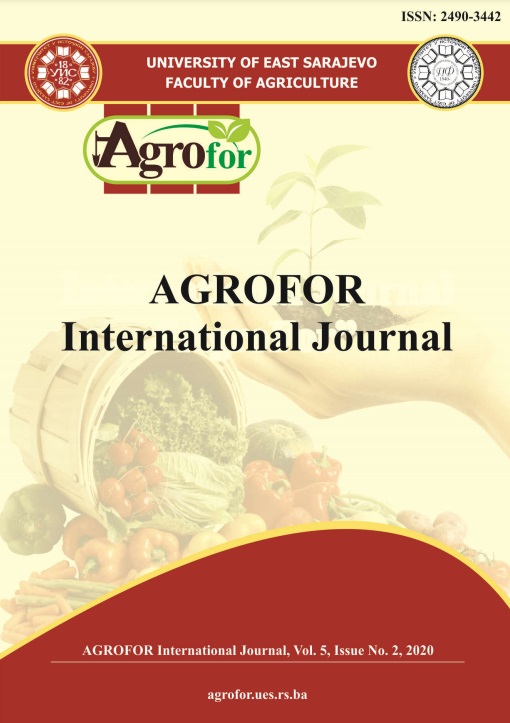TYPOLOGY, PRODUCTIVITY AND DYNAMICS OF ALEPPO PINE STANDS IN THE OUARSENIS MASSIF (ALGERIA)
DOI:
https://doi.org/10.7251/AGRENG2002114SAbstract
Aleppo pine is the most important forest species in Algeria. This species has been
used for a long time in reforestation programs, notably the “green dam” planted in
the 1970s. Despite this importance, the Aleppo pine continues to undergo all kinds
of degradation such as land clearing, illegal cutting and fire. This situation is
causing reduction of potential wood production, also jeopardizing the vitality of the
stands and their regeneration. This work aims to describe the typology,
productivity and dynamics of Aleppo pine stands in the Ouarsenis massif (West of
Algeria). 27 plots were installed to describe the stands (composition of forest
species, dbh , total height, and basal area). Regeneration was estimated by the rate
of juvenile individuals (dbh<5cm). The results obtained shows that the Aleppo pine
develops different conditions for altitude, climate and type of soil. These
conditions have a direct influence on the structure of the Aleppo pine and its
productivity. The best populations develop on an average altitude (500 to 1400 m),
in subhumid and semi-arid climates, on southern exposures and on limestone soils.
The stands are mostly young (age <70 years) with good natural regeneration. These
results put focus on the factors of degradation of the Aleppo pine, in particular the
recurring fires and the lack of silvicultural management which application can
improve the productivity and the vitality of the stands.

